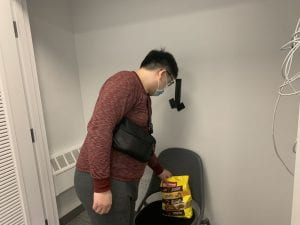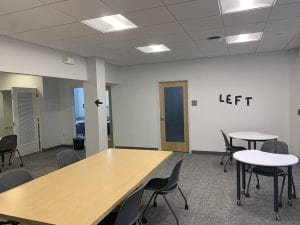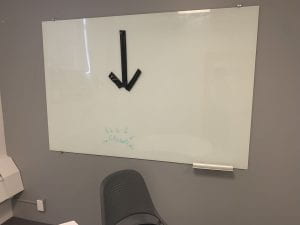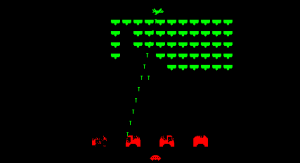The piece was inspired by Uncle Roy All Around You. The GPS equipment and the virtual avatar made me feel like a game with AR elements. A game should have a start and a goal, but what if both of them are generated by the players? Like the game rules in Uncle Roy All Around You. One player created the order, and the other one should follow it. The game designers just provided tools and basic rules. Then, I wanted to make a game with no specific rules, or the players may not feel they are playing a game.
Backroom inspired me a lot in the visual UI design. The huge black words were written beside a door, a pit, or a window. The character could choose to enter or not. Also, the words sometimes could be viewed as traps or decorations. When the player saw the black marks and started thinking about the clues behind the marks, the game was already started. So, I tried to make a similar one in the real life to see what they may do when they see the marks.
Then, I used black tape to decorate a public room with words and signs, making an easy treasure hunt. If people noticed the words, they would enter a room and look for the hidden treasure. The participants were the people who saw the words. Most of the participants were confused and ignored the information, but one of them joined the game.
When the player saw the information, he followed the “LEFT” sign to look left. Then, he found a “HEre” sign in a room. So, he entered the room and look around for more information. Finally, he went out and found the hidden candy in the public area. When I asked him about how the decorations felt, he was confused because he thought those signs were for the game.
I think the result turns out some interesting facts. A game can be started occasionally. Although there’s no clear start and goal, players still can make rules and play a game. Game designers’ job is more like building a playground for the players. When the players think it is a game, then it is a game.
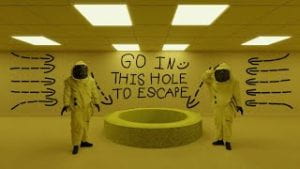
Words in Backrooms


